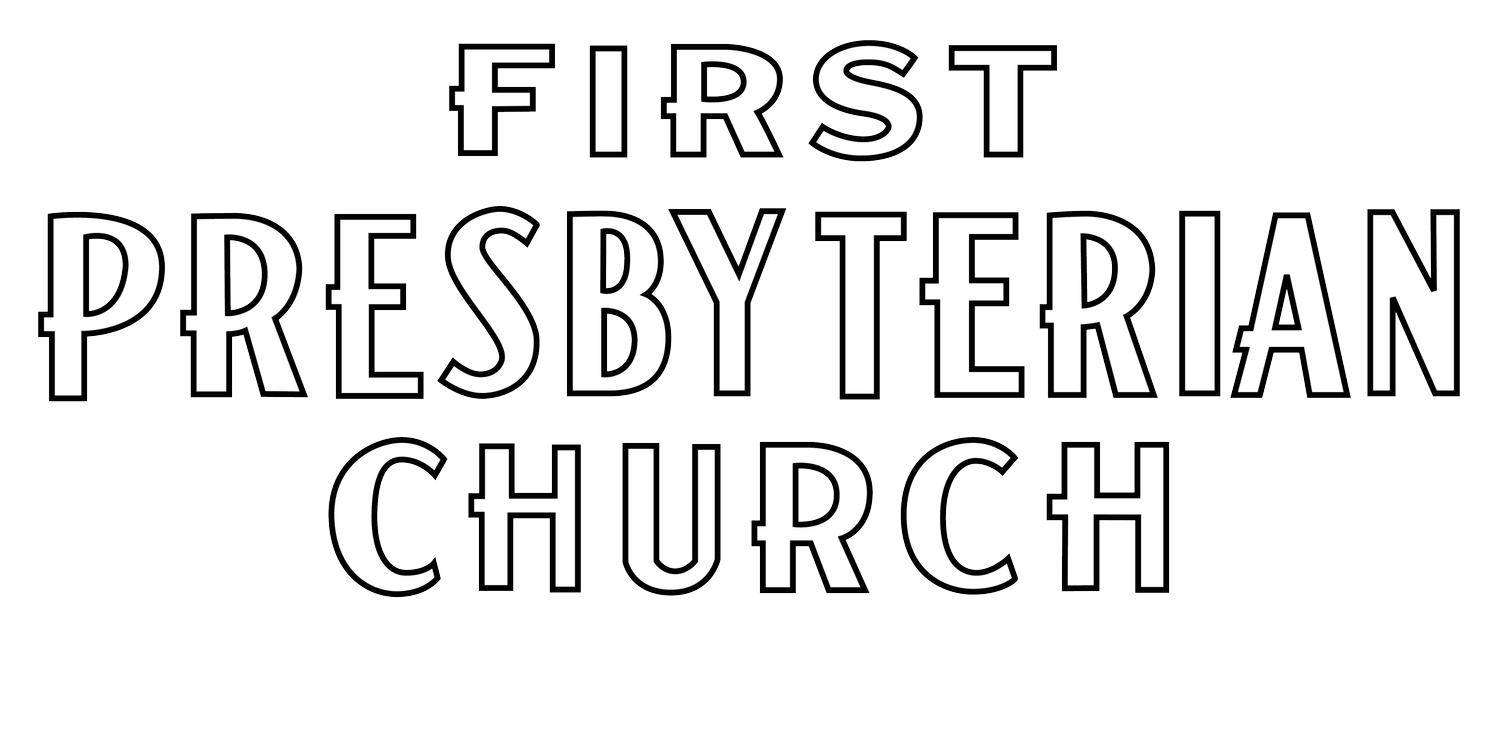
CHURCH HISTORY
Ministers of FPC
B. K. McElmon ………….1883 - 1890
Anselm B. Brown ………1891 - 1892
Walter B. Floyd ……………………1893
J. A. McArthur ………….1893 - 1895
Donald Ross ……………..1895 - 1896
W. A. Mackey ……………1896 - 1905
J. R. Macartney ……….1905 - 1914
E. S. Hudson……………..1915 - 1919
Harry S. Templeton ………1919 - 1922
E. H. Gelvin ………………..…1923 - 1926
Lee Tottenn ……………..….. 1926 - 1930
J. R. Macartney …..…….…1931 - 1936
Henry Marcottee - Interim ……..1936
Isaac P. Ward …………….…1937 - 1941
Russell G. Bisnett ……..….1942 - 1945
R. T. Macarlane ……….…..1946 - 1949
H. E. Penhalurick ……..…..1950 - 1957
Arthur E. Benzanson …………...1958 - 1966
Richard Cole ……………………….. 1966 - 1972
C. Thomas Lane …………….…....1973 - 1980
Russell G. Bisnett ……………..….1980 - 1982
Charles Carlson ……………..…….1982 - 1989
Robert Olmstead Interim ……. 1989 - 1991
David Murphy …………………..…1991 - 2000
C. Thomas Lane Interim …….… 2000 - 2003
Doug Bunnell ………………………. 2003 -
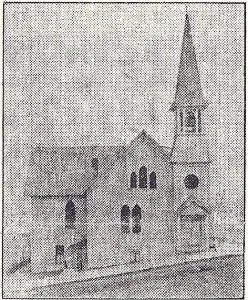
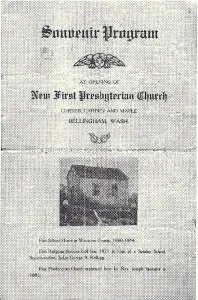
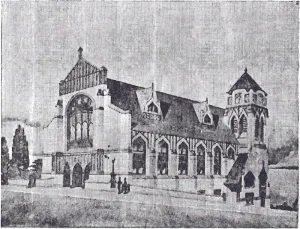

1876 - As part of the national centennial observance, the General Assembly of the Presbyterian Church authorizes formation of a new synod in Northwest, including Presbytery of Puget Sound.
1882 - Presbytery appoints Joseph Spangler to do missionary work in what is now Whatcom, San Juan, Skagit and Island counties. No Presbyterian congregations yet in the area. Fifty families migrate from Kansas to Bellingham Bay to build sawmill at mouth of Whatcom Creek. Logging spurs economy; population grows from 400 to almost 1,200 over the next four years.
1883 - Spangler dies. Rev. Beveridge Knox McElmon appointed to replace him. He does some of his preaching in logging camp saloons along the upper Nooksack.
1884 - Presbytery instructs McElmon to organize churches at New Whatcom (also known as Sehome) and south Bellingham (Fairhaven.) McElmon gathers a few Scottish and Welsh residents and begins holding services in a school house. First communion service held August 24. The congregation is known simply as "First Church."
1885 - Church women organize a Sunday school; participants seldom number more than fifteen.
1886-89 - Hopes for rail service remain frustrated. Economy stagnates. Only seven new members join fledgling church over these years and some early members drift away.
1889 - First Church, still with just twenty members, purchases a lot at High and Maple streets. McElmon, members and neighbors pitch in to build a church, at a cost of $3,000. The new church is dedicated November 10. Washington Territory becomes a state the next day. McElmon resigns. Pulpit vacant for eight weeks. Great Northern Railroad reaches Bellingham Bay.
1891 - Rev. Anselm Brown called by First Church congregation. Music and service becomes more tightly-organized. "Mr. Webber" organizes a quartet to sing. The weekly program: Doxology, invocation, Lord's Prayer, scripture reading, singing, lengthy extemporaneous prayer by pastor, hymn of praise, personal testimonies, announcements, sermon (45 minutes to an hour), prayer, offering, singing, benediction.
1891 - Annie Llewellyn, one of thirteen charter members, is called before Session accused of "laxness in all religious duties, selling whiskey, and keeping her store open on the Sabbath." Mrs. Llewellyn repented in public and was allowed to remain in the church. But daughter, Lizzie, defied Session and was excommunicated the next year.
1892 - Brown resigns. First Church, unable to afford its own minister, is served by Rev. W.A. Mackey, pastor of the church in Fairhaven.
1893 - Rev. Walter B. Floyd called. Half his $1,200 per year salary to be paid by Board of Home Missions in Philadelphia. But Floyd resigns after four months, possibly due to financial difficulties. Rev. John A. McArthur called to replace him. His salary is $1,000 per year.
1895 - McArthur resigns to accept call in Waterville. Rev. Donald Ross replaces him.
1896 - Ross resigns; Congregation cannot muster even their half of his meager salary in these depressed times. Collections for year totaled just $650. A special offering for St. Luke's Hospital raises $2.80, but trustees decide that First Church needs to keep the money. Rev. Mackey of Fairhaven accepts call to First Church, soon to be known as First Presbyterian Church of Bellingham after the new city is formed from towns along the bay. Membership rolls list eighty persons; Sunday school enrollment is 112.
1898-99 - Alaska gold rush spurs West Coast economy; Bellingham lumber mills and coal mines enjoy modest boom and population grows. But number of churches grows too. FPC membership, still based on Scottish and Welsh families, grows but slowly. Trustees pay little attention to church finances. Home Missions support is reduced when they fail to do the required paperwork. Congregation considers replacing trustees with members of Ladies Aid Society. Presbytery vetoes the idea: Church officers must be men. But Presbytery later relents and allows formation of "Ways and Means Committee" with three men and three women. Fund-raising becomes more successful. Mackay's salary is still just $950 a year.
1899 - Feeling a bit flush, church buys 60 chairs, improves gaslight system, adds Sunday School rooms. Sunday attendance tops 200 for the first time. 1904 - Home Missions Board declares FPC to be self-supporting. Mackey now earns $1,300 a year. Congregation pledges $10 per year to support Whitworth College.
1905 - Mackey resigns. A "Rev. Murphy," otherwise unidentified, fills in for a few months. Rev. John Robertson Macartney, though less than 30 years old, called as new pastor.
1906 - Macartney leads $3,000 fund drive for FPC's first organ, managing to get contributions even from civic-minded non-members.
1907 - FPC sends its first commissioner to General Assembly: R.S. Simpson and wife travel to Columbus, Ohio for the event. FPC formally incorporates under state law.
1908 - Active members number 22l with 316 in Sunday School. The Christian Endeavor societies provide service opportunities for young people. Missionary Society and Ladies Aid Society also active. Macartney's preaching and excellent music program regularly draws crowds that overflow the church.
1909 - Building committee recommends purchase of lot at Garden and Maple Streets for $4,600 in anticipation of the eventual construction of a new church.
1910 - Lot purchased; ceremonial groundbreaking in July. Cornerstone laid in November during a lengthy outdoor ceremony in a torrential downpour. Billy Sunday brings his revival movement to Bellingham, preaches at FPC and elsewhere. Lutherans agree to purchase old building for $2,500, bell and organ not included.
1912 - FPC members begin worshiping in basement of new building on March 1 as sanctuary construction continues. Building dedication service takes place March 3, with Rev. McElmon presiding. Contributors provide memorial windows, including large one at rear of church to remember Rev. James Thompson, pastor of church in Fairhaven who was among scores killed in an avalanche that buried a train at Stevens Pass the previous year.
1912-1913 - New building finished at a cost of $67,000. Pastor and Sunday school youth help carry organ pipes down the hill to new location. Opening services in the Sanctuary take place April 27, 1913, and the large front window is unveiled at 3 pm that day. Macartney, a political activist, is a fervent preacher for prohibition. During a Sunday service, suspected “wet” partisan shoots holes in main stained glass window with bird shot. But Bellingham voters, not impressed, vote to go dry.
A Brief History
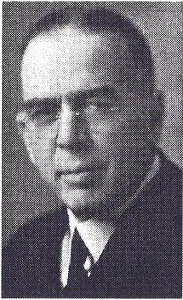
Rev. John Macartney
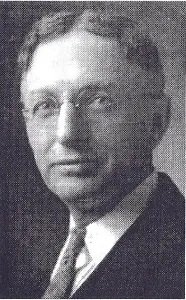
Rev. Lee Totten
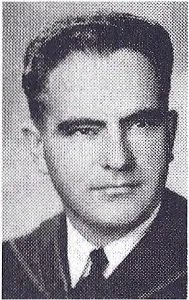
Rev. Russell G. Bisnett
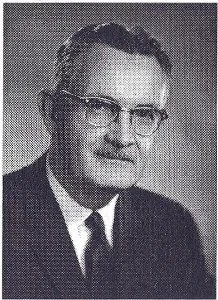
Rev. Harold Penhalurick
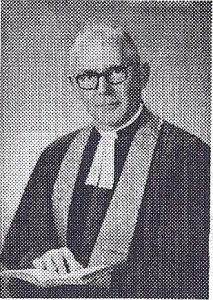
Rev. Arthur Bezanson
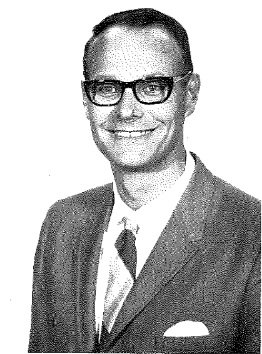
Rev. Richard Cole

Rev. C. Thomas Lane
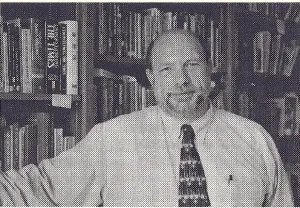
Rev. David Murphy
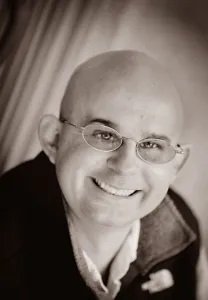
Rev. Doug Bunnell
1914 - Macartney accepts call to church in Waterloo, Iowa.
1915 - Rev. E.S. Hudson called to replace Macartney. Hudson struggles in Macartney's shadow.
1918 - Hudson becomes an Army chaplain. Influenza quarantine shuts all local churches from September of this year to January, 1919.
1919 - Rev. Harry Templeton of Vancouver, Washington is called to FPC. He helps recruit new members.
1922 - Templeton departs for University Presbyterian Church in Seattle.
1923 - Dr. E.H. Gelvin of Sand Springs, Oklahoma is called to FPC, after other candidates turn down FPC's $3,800 salary offer. Gelvin, known as a modernist, is not fully accepted by fundamentalist members. In Gelvin's first year, 28 new members join, but 60 members depart. Financial support drops 18 percent. But in the next three years of Gelvin's pastorate, membership rebounds.
1926 - Gelvin resigns, and is replaced by the Rev. Lee Totten, considered a "fundamentalist." Many “modernist" members oppose his selection.
1927 - Totten convinces church members to buy lot to the south of main church, now occupied by INN Building. He also inaugurates parish system, and starts Men's Brotherhood, later known as the Presbyterian Men's Club. Congregation grows from 386 to 470 in Totten's first year.
1928 - At Totten's behest, Birchwood Presbyterian Church is organized with support of FPC.
1929 - Membership stands at 522.
1930 - Rev. Macartney, now pastor of a Los Angeles congregation, agrees to return to Bellingham to replace Totten.
1931 - Macartney returns in January, to a city crushed by the Great Depression.
1932 - Despite grim times, giving to the church increases 17 percent over previous year. The church even manages to send $100 to Whitworth College. Macartney organizes joint meetings of the boards of all three local Presbyterian congregations.
1933 - Macartney reorganizes declining Men's Club, forming AOTS Club, standing for "As One That Serves." They raise cash for community milk fund, a predecessor to the United Way, which provides free milk at lunch time for needy school kids - the only midday nourishment that some children get. The 20th anniversary of the building and the 50th anniversary of the founding of the church is celebrated in this year, even though the building is 21 years old and the church itself actually fifty-one years old. Rev. Beveridge McElmon, now 87 years old, gets a standing ovation at the ceremony.
1935 - Membership is 473, with ninety involved in Christian Endeavor societies for younger members. Sunday school enrollment is 336.
1936 - McElmon dies at age 90. Macartney resigns, despite the urgings of church elders; he needs more time to care for his invalid daughter. The nominating committee formed to find his replacement includes women for the first time. Dr. Henry Marcotte of Portland named as interim pastor. Church membership slips after the departure of the popular Macartney.
1937 - Dr. Isaac Ward called to FPC. Hildur Lindgren Helgeson, former Swedish opera soprano, becomes music director, serving for 13 years.
1939 - Rev. Dan Gilbert, an anticommunist preacher, speaks at the church. To some, his remarks seem too tolerant of Nazism and fascism, and FPC's reputation suffers in some circles. During this period, Dr. Charles Fisher, a former FPC elder, is dismissed from the presidency of Western Washington College of Education, and some college faculty members believe his removal had been instigated by his "fundamentalist" foes at FPC. Political tensions are further inflamed when ultra-conservative Dr. Bob Jones preaches in Bellingham and gets a warm reception by some at FPC. FPC also sponsors a local appearance by "First Mate Bob" of the Haven of Rest radio ministry. Local modernists are convinced that FPC is firmly in the fundamentalist camp.
1940 - Fundamentalist fervor runs high among Christian Endeavor youth at FPC; they become disenchanted with Ward, whom they see as tainted by modernism. FPC elders, alarmed by decline in youth attendance, ask Ward to resign. Ward appeals to Presbytery, which in turn pushes for resignation of FPC Session. The elders agree to resign, and four of the seven leave FPC.
1941 - Ward, faced with a hostile congregation, resigns. A new Session, appointed by Presbytery, also faces hostility.
1942 - FPC allowed to elect its own elders again. Deposed former Session members fail in reelection bid. Christian Endeavor officers resign, and organization virtually ceases to exist at FPC. More than 100 members depart to Broadway United Presbyterian Church. Sunday School attendance drops to about 30. After a period of near-paralysis, Rev. Russell G. Bisnett is called to FPC. After some wrangling with Presbytery and members still disgruntled about Ward’s departure, he gets a permanent appointment. Bisnett gets membership numbers climbing again, and begins to rebuild youth organization. He invites many people to his home, and begins to enroll new members. Some departed members begin to return.
1943-44 - Bisnett continues to work to reconcile warring factions. At his urging, Session agrees to invite Isaac Ward back to preach one sermon as a guest preacher, but Ward dies before he can return.
1944 - Membership stands at 368, an increase of sixty-three in one year. Youth groups, known as Westminster Fellowships, report membership of seventy-five. Women’s groups have 155 members. Bisnett gets congregation to forego Sunday evening service, freeing him to preach for struggling Acme congregation.
1945 - Bisnett resigns to take on regional leadership of the Presbyterian Church USA’s postwar relief effort, known as The Restoration Fund.
1946 - Dr. Robert T. Macfarlane, former chaplain in both world wars, called to FPC. He joins Kiwanis, American Legion and Masons, and recruits new members from each. New members number 117 in his first year. A performance of Messiah draws an estimated 800-900 people, packing the aisles, the balcony and even the narthex and balcony stairs.
1948 - Church membership continues rapid growth, including some returning exiles from Broadway United. Rolls top 600.
1949 - MacFarlane accepts call to a church in California, despite congregation vote refusing to allow him to leave.
1949-1950 - FPC seems adrift after MacFarlane's departure. Recruitment and fundraising at a near standstill.
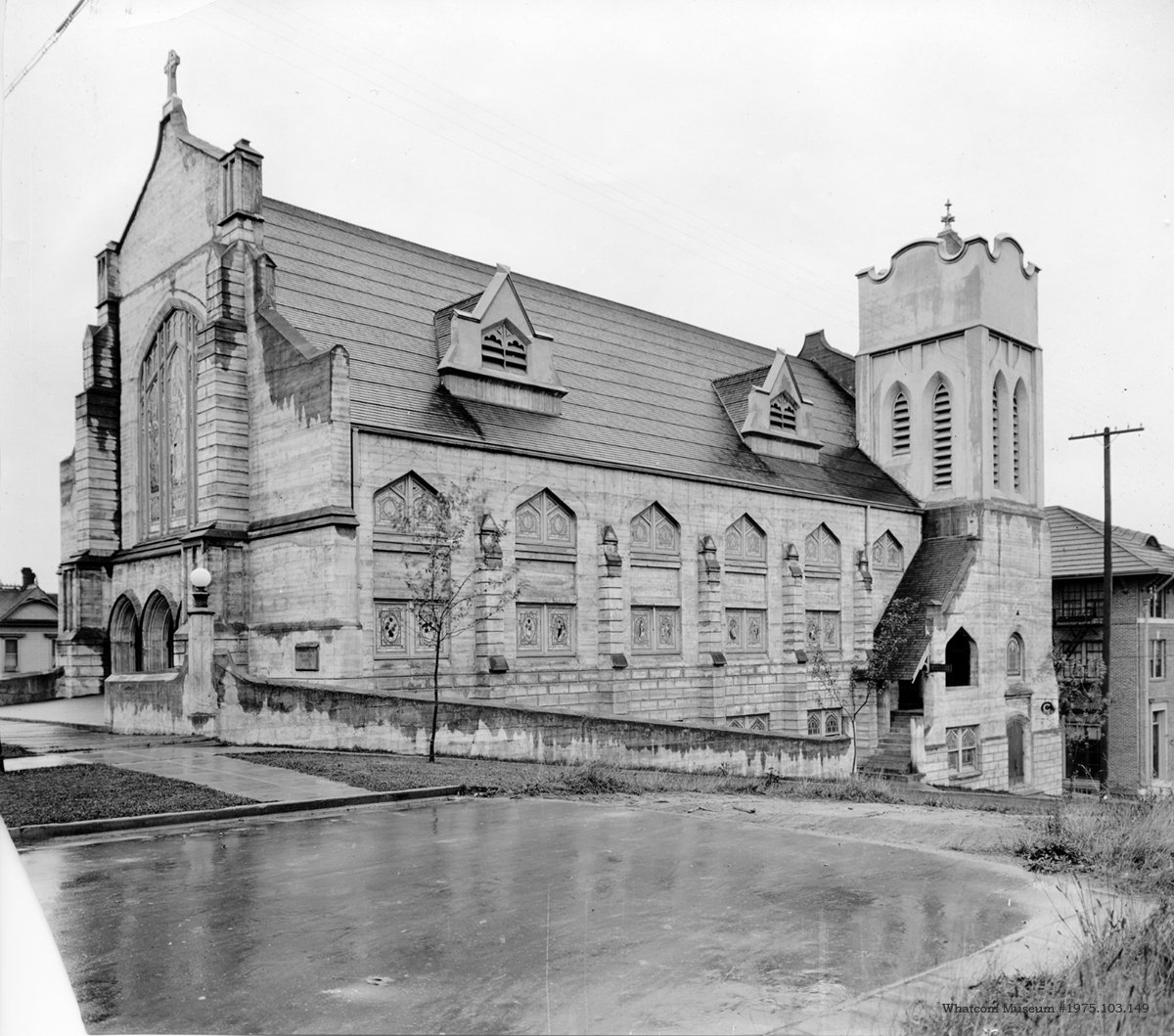
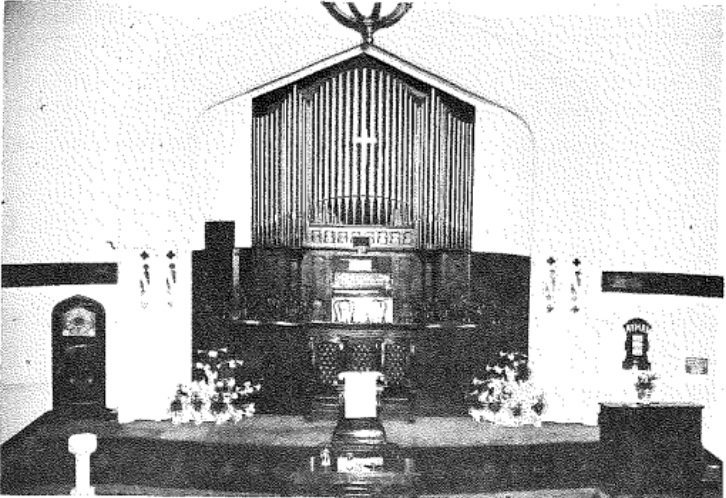
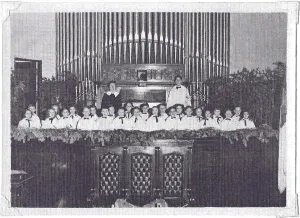




1950 - Rev. Harold Penhalurick, a member of the Whitworth faculty, called to FPC. The INN Building is constructed using materials and labor donated by Tom Nash. Cedar shakes split from old stumps and hauled to the site by members, and beams salvaged from abandoned Milwaukee Road rail car barge dock at the foot of Cornwall Avenue. Penhalurick also works to build benevolence giving for charities outside the church, which stood at $1,700 per year when he arrived.
1953 - At Penhalurick's urging, an electric carillon is installed, but neighborhood protests restrict its use.
1955 - High school students draw ire of some members by holding square dances in the youth building. Under criticism from many members, they agree to stop the dances.
1957 - Penhalurick accepts appointment to Board of National Missions and resigns, with benevolence giving now topping $7,000 per year. Efforts to replace him lead to wrangling between Session and Presbytery. But both authorities finally agree on Rev. Arthur Bezanson. Parking lot at Laurel and Garden streets is purchased.
1966 - New organ dedicated, its cost largely contributed by Tom and Ivy Nash. Bezanson resigns to join the ecumenical movement. Rev. Richard Cole is called to replace him.
1972 - Cole resigns to accept position at Whitworth.
1973 - Rev. C. Thomas Lane replaces Cole. He presides over explosive growth in the INN ministry.
1974 - WWU student Tom Cooper comes into FPC service to get out of the rain. He stays to become FPC's College Minister, building a campus ministry centered in Youth Building rechristened "The INN."
1980 - Fred Prudek assumes leadership of campus ministry. FPC offers its facilities to all WWU Christians after state attorney general rules they may not meet on campus. INN program triples in size. Rev. Lane resigns. Rev. Bisnett comes out of retirement to fill in.
1982 - Rev. Charles Carlson called to FPC, taking over a congregation with a declining membership. In a doctoral dissertation written during his pastorate, Carlson contends that the denomination's links to left-wing social gospel activities at the national level have caused some members to leave. His dissertation is an ambitious plan for renewal. Although his goals for membership growth were not attained, many members cherish his tenure as a time of spiritual growth. Small groups flourished, and Mrs. Betty Carlson led a popular Youth Club and children's bell choir.
1989 - Carlson departs. His interim replacement is Rev. Robert Olmstead. He gets members involved in defining FPC's mission and vision. The consensus: FPC must grow if it is to survive, as the number of worshippers is seriously declining. And FPC must continue its long-standing emphasis on the Word of God. Another result of Olmstead's organizational work is the drafting of a job description for the pastor that emphasizes the need for a "change agent to shake us out of our complacency and revitalize the church for future mission."
1991 - Rev. David Murphy is called to FPC. The church retains its traditional worship service, but adds a contemporary service on Sunday morning. The congregation explodes with growth, attracting hundreds of new worshippers. An emphasis on prayer, healing, and worship emerge. The pastor's newspaper column in the Bellingham Herald helps to increase FPC's visibility and offers a Christian voice to the community. The INN grows from approximately 250 to 1,000. A successful fund-raising drive provides much-needed repair and remodeling work. Pastor Murphy leaves the summer of 2000.
2000 - Under the direction of Presbytery, FPC conducts a lengthy pastoral search. Though interims are in place for a short while, the church requests and is allowed to bring in two retired Presbyterian pastors to assist in place of the interims. Rev. Harold “Lad” Anderson moderates Session and Rev. C. Tom Lane (former FPC pastor) conducts Sunday worship services and visitation.
2003 - 2009
2003 - Rev. Doug Bunnell begins his work here at FPC.
2004 - Rev. Doug Bunnell’s son Zachary dies of cancer on Christmas Eve.
2006 - FPC completes a successful building renovation: installing in a ramp, elevator, larger lobby and new bathrooms.
During this time, the children’s department grows to over 160 children in Sunday school resulting in the church having to use the YWCA and INN building for classrooms. The women’s Bible study also uses the YWCA and INN building, as well as all available rooms in the church as its attendance for day group exceeds 85 women and 20 children. Two evening Bible study groups are also formed to meet the desire of women for biblical teaching.
2010 - 2017
2010 - FPC initiates the “Many Congregations One Spirit” service, which brings together 7 different congregations of varying denominations to gather for a Pentecost worship service at the Mount Baker Theatre. Each year the gathering blesses a different ministry with the offering.
2012 - FPC celebrates the 100-year anniversary of the current building.
2013 - FPC establishes the motto of “Sharing a Living Faith Across Generations”, which shapes the church’s focus on intergenerational worship.
2015 - The children’s program launches Godly Play, which focuses on making meaning through story, wonder, and play and nurturing spiritual lives by honoring the centrality, competency, and capacity of children.
2017 - In a year of several significant changes in the leadership of FPC, Ministry Associate Cris Hageman ended her 20 years of ministry at FPC. The Cris Hageman scholarship fund is established in her honor. Becca Niemeyer is voted in by the congregation as the first ever Associate Pastor at FPC. She is also the first female pastor and the first pastor of color. Rev. Doug Bunnell received a Lilly Grant Sabbatical and there is a church focus on pilgrimage while he and Laurie walk the Camino de Santiago.
FPC continues to invest in the legacy of the building by replastering and repainting the inside of the church after steam damage from the boiler, and then replacing the boiler with furnaces and heat pumps.
During this season FPC sees a number of people intern or come under care of the church and go on to be pastors all around the country, including: Bryan Dunigan, Jeff Kintner, Janice Smith, Greg Ellis, Kyle Anderson, Robby Olson, Seth Thomas, Shannon Smythe, Matt McCoy, Becca Niemeyer, and Kerrie Bauer.
2018 - 2021
FPC hosts a series of gracious family dialogues to listen to each other around the marriage and ordination of LGBTQ+.
2019 - Kerrie Bauer is commissioned by the Presbytery as a Commissioned Pastor by the request of the FPC Session.
2020 - FPC ceased in person services curing the COVID pandemic and instead provided weekly online services.
2021 - FPC began meeting in person again while services continued to be available online. Pastor Becca Niemeyer left FPC to pastor at Quincy Presbyterian Church. After 50 years The INN ended its ministry to college students.
2022 - Current
2022 - The outbuilding previously used for The INN was remodeled and reopened as The Commons - a place for pursuing art and faith. During that winter, The Commons was used as a cold winter shelter for the YWCA.
2023 - FPC celebrates the 140 year anniversary of the church, and Rev. Doug Bunnell celebrates 20 years at FPC.
Pastor Kerrie Bauer takes sabbatical and with support from a grant from the Lilly Endowment FPC focuses on Psalm 23.
2024 - First Pres Preschool begins at FPC.
